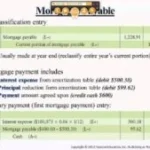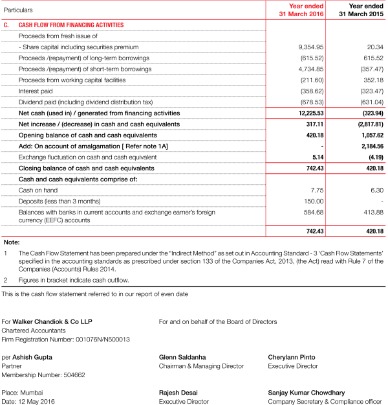
This automation ultimately helps save time and reduces the risk of errors in transaction categorization and data organization within the QuickBooks Online platform. top names over the last 100 years This process is crucial for optimizing rule management, as it allows users to have greater control over how transactions are categorized. By deleting unnecessary rules, users can streamline the categorization process and ensure that their financial records accurately reflect their business activities.
Similarly, as your business grows, you may encounter diverse transaction types that require more specific categorization or rules that need to be adjusted to ensure precise matching. Using rules ensures that financial reports and tax filings are based on consistently categorized transactions, facilitating accurate record-keeping and compliance. While inside your For review tab, select Recognized from the All transactions ▼ dropdown menu. When you download transactions from your bank, you need to categorize them so they go into the right accounts. This action can potentially disrupt the historical continuity of financial records, leading to discrepancies in reporting and analysis. Reconciliation processes may need to be revisited to ensure that the undone rule’s effects are appropriately addressed, and adjustments may need to ice swap rates 11 be made in financial statements or reports.
How To Delete a Rule in QuickBooks?
It’s imperative to weigh the potential risks and benefits, ensuring that the company upholds the highest standards of financial governance and accountability within the QuickBooks Online platform. This is crucial for maintaining the integrity of financial data and ensuring that the organization’s financial statements are in line with industry regulations. By removing the edited rule, it prevents any misrepresentation of financial information and supports transparency in reporting. This step not only streamlines the accounting process but also fosters trust and confidence among stakeholders. This automation saves time and minimizes errors in transaction management, allowing users to efficiently maintain accurate financial records within the QuickBooks Online platform.
Utilizing the ‘Test’ Feature Before Applying a Rule
After choosing the rule, users can click on the ‘Delete’ option and confirm the deletion. This action will remove the rule from the system, streamlining the rule management process and reducing clutter in the transaction categorization workflow. This process optimizes rule management and ensures that the system is not cluttered with unnecessary or outdated rules. To select a rule for deletion, users should first review their existing rules to identify those that are no longer required or are creating conflicts in transaction categorization. They can then navigate to the Rules section in QuickBooks Online, locate the specific rule, and proceed with the deletion process. Changing rules in QuickBooks Online entails making adjustments to the automated instructions that dictate transaction categorization and management, allowing users to adapt their financial data organization.
Accessing the rules list in QuickBooks Online provides users with an overview of the existing automated instructions for transaction categorization and organization, facilitating effective rule management. In QuickBooks Online, rules are a powerful tool for automating and streamlining your accounting processes. There may come a time when you need to undo a rule due to changes in your business needs or errors in the rule setup. In this article, we will explore the process of undoing a rule in QuickBooks Online, step by step, to help you efficiently manage your financial transactions. This process allows for the optimization of rule management, ensuring that only pertinent rules are in place to categorize transactions accurately. By accessing the ‘Banking’ menu, users can select ‘Banking Rules’ and then spot the rule that needs to be deleted.
- At some point, you’ll probably need to review your existing bank rules and make some changes.
- We do this through ongoing advocacy and access to education and training, curated technology, compliance support, community, and back-office and client support services.
- We will address the aftermath of undoing a rule, answering questions such as whether the previously affected transactions will be restored and if the rule will be completely deleted from your system.
- Auto-add rules run when you sign in, upload a file, or create or modify a new auto-add rule.
- This action could have significant consequences for the overall financial management of the company.
How to Create Bank Rules (to Save Time!) in QuickBooks Online

This not only saves time but also reduces the risk of errors in transaction categorization, providing a more reliable financial overview. This list is an essential tool for managing financial transactions effectively, as it enables users to identify the specific rules that are impacting their transactions. By accessing the rule list, users can pinpoint the rules that need modification or removal, ensuring accurate financial reporting and streamlined transaction categorization. By navigating to the ‘Banking’ menu and selecting ‘Banking Rules,’ users can efficiently manage their automated transaction instructions. Within the rules list, users have the option to edit, delete, or create new rules to ensure accurate and streamlined transaction processing.
Editing rules in QuickBooks Online involves modifying the automated instructions that govern transaction categorization and management, allowing users to refine and customize their financial data organization. Accessing the rules list in QuickBooks Online provides users with a comprehensive overview of the existing automated instructions for transaction categorization and organization, enabling efficient rule management. This process involves accessing the ‘Banking’ tab within QuickBooks Online, what is cash from operating activities where users can navigate to ‘Rules’ to view and modify existing automated instructions.
By the end of this article, you will have a thorough understanding of how to navigate the process of undoing a rule in QuickBooks Online, empowering you to optimize your financial management with confidence and efficiency. We recommend you start by creating easy rules for recurring transactions (think XYPN monthly dues), then increase the difficulty as you become more comfortable understanding the criteria to make a good rule. You can create targeted rules so specific transactions are automatically accepted into your books from the Bank transactions (Take me there) page. QuickBooks automatically applies your rules to transactions in the For review tab. By taking these factors into account, the task of identifying the rule to undo becomes an essential aspect of maintaining the accuracy and relevance of the rule list. Once saved, the rule functions automatically to manage future transactions seamlessly and accurately.
To begin the process of undoing a rule in QuickBooks Online, you need to access the rule list, which contains all the predefined criteria and instructions for transaction management and categorization within the software. By fine-tuning the rule management, users can ensure that the platform accurately categorizes transactions, providing a clear and organized overview of the company’s financial activities. Effective rule management is essential for maintaining accurate financial records and making informed business decisions within QuickBooks Online. By optimizing rule management, users can customize their automated guidelines to better suit their specific financial needs, further enhancing the efficiency of transaction categorization and management within QuickBooks Online.
Understanding the significance of the rule list in QuickBooks Online is crucial for maintaining organized and transparent financial records, aligning with best practices for efficient financial management within the software. When choosing a rule to change in QuickBooks Online, users should first navigate to the banking or transactions tab and locate the ‘Rules’ feature. From there, they can review the existing rules and criteria set for categorizing transactions. Adapting transaction management involves customizing the criteria for how transactions are classified, providing a more tailored approach to organizing and analyzing financial data within the QuickBooks Online platform. Customizing transaction management through rule editing allows for greater control over how income and expenses are classified, saving time and reducing the margin of error in financial reporting. The final step in undoing a rule in QuickBooks Online involves removing the edited rule, ensuring that the changes are accurately reflected in financial reporting and compliance with accounting standards and regulations.